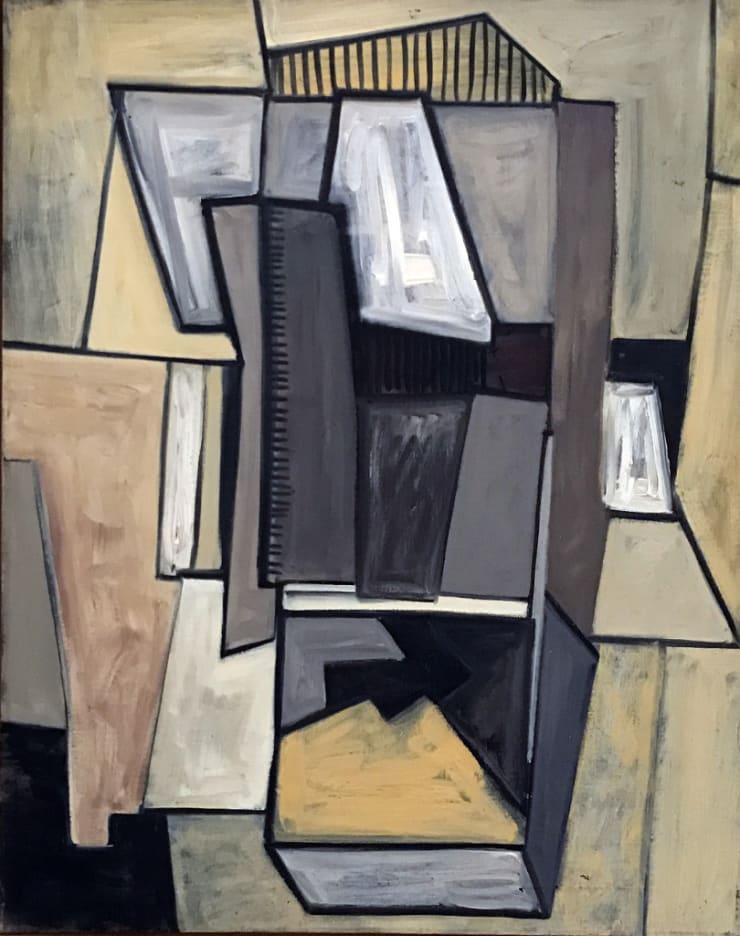Willem de Kooning Dutch-American, 1904-1997
contact us to enquire on works by willem de kooning
Born in Rotterdam, Netherlands, de Kooning emigrated illegally to the United States in 1926. Along with Jackson Pollock, he became a leading member of the New York School of Abstract Expressionism. De Kooning developed a distinctive, hallmark style, later termed action painting. Peter Schjeldahl, an American art critic, described the technique as “an arm motion that unclenched one of the most concentratedly intelligent marks ever seen. The stroke could deliver at once line, shape, color, contour, depth, touch, rhythm, and, crucially, scale… you grasp the muscular eloquence, both fierce and delicate, of that visible exertion, which communicates between the artist’s body and your own...”
De Kooning’s paintings contain fragments of bodies that seem to emerge from the thickly applied paint, writhing against one another in an ever-increasing tempo — here an elbow, there a thigh, but nothing explicit, always just suggestions. They also contain fragments of pop culture. Film, advertisements, and iconographic images all find their way into his paintings.
In the 1980s, de Kooning began to suffer from Alzheimers, but continued to paint for nearly a decade as his mind gradually descended into senility. Many of the paintings from this late period have stymied critics, for they are both evolutionary extensions of his previous work and something new. Although difficult to understand, the late paintings contain an undiminished power and excellence. Schjeldahl is once again quoted: “I propose that late de Kooning is the degree zero of painting, attained not through simplification but, fully complex, through being emptied of anything not identical with its execution. This work henceforth defines the verb ‘to paint’.
-

Mercedes Matter
Paintings and Drawings 1966 - 1986 18 - 30 Jun 2022In our Sag Harbor location “Mercedes’ Matter Paintings and Drawings 1966 – 1986” explores a series of 15 canvases and 15 drawings of Matter’s late period that are harvesting all...Read more -

To Be An Artist Is To Embrace The World In One Kiss
8 Oct - 24 Nov 2021Mercedes Matter (1913-2001): Her father, Arthur B. Carles, a pioneering American modernist painter, taught her to paint landscapes in the French countryside when she was 6. As a teenager living...Read more -

Compendium
A Survey of the last 75 years of Art History; Abstract Expressionism, Color Field, Minimalism and Pop Art 11 Aug - 3 Sep 2018Mark Borghi Bridgehampton is pleased to present Compendium, a survey of the last 75 years of Art History; Abstract Expressionism, Color Field, Minimalism and Pop Art. This exhibition provides...Read more -

Lyrics & Form
Abstraction Expressionism and its Influence on Color Field Painters 1 - 31 Jul 2018Mark Borghi is pleased to present Lyrics & Form: Abstraction Expressionism and its Influence on Color Field Painters, in the Bridgehampton gallery. As a reaction away from the gestural...Read more -

MOVING TARGETS: AMERICAN ART FROM 1918-2012
1 - 30 Jul 2017MOVING TARGETS looks anew at relationships, influences, and two-way exchanges between historic and contemporary American Artists. The lines of academic and modernist influence from Europe to the United States can...Read more













